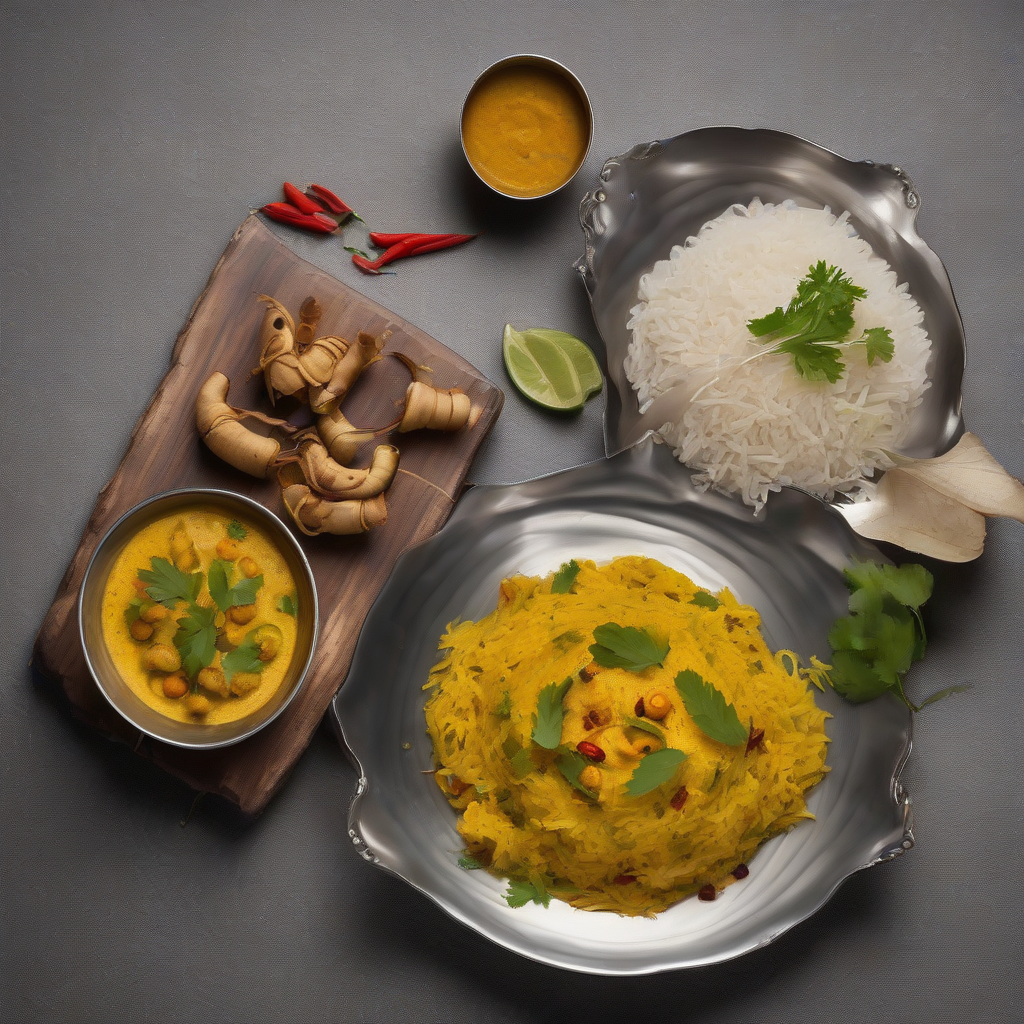Aiyo Rama! Tamarind Rice Tales: Pulihora, Your Next Favourite Dish!
Namaskaram folks! Kem cho? Assalamualaikum! Sat Sri Akal! Your friendly neighbourhood Chef Curry Do’pyaza here, ready to whisk you away on a flavourful journey! Today, we’re diving deep into a dish that’s close to my heart (and stomach!): the tangy, tempting, and totally terrific Pulihora!
This isn’t just any rice dish, my friends. Pulihora is an emotion, a memory, a burst of sunshine on a plate.
When Do We Pulihora?
Think of festivals like Ugadi, Dussehra, and Diwali – Pulihora is practically mandatory! It’s the star of temple offerings, a staple at family gatherings, and a comforting treat during the hot summer months when you crave something zesty and light. It’s also a popular travel companion, because it stays well and tastes even better after a few hours!
A Little Pulihora History, Just for Fun!
Legend has it that Pulihora originated in Andhra Pradesh, a state known for its love of all things spicy and sour. The word “Puli” means tamarind in Telugu, so you already know what gives this dish its signature tang! It’s been passed down through generations, with each family adding their own special touch. My grandmother’s secret? A pinch of love, of course!
Ready to Get Cooking?
Alright, enough chit-chat! Let’s get our hands dirty (metaphorically, of course, wash your hands first!).
Prep Time: 15 minutes
Cook Time: 30 minutes
What You’ll Need (The Pulihora Power Pack):
- Rice: 1 cup, Basmati (long-grained, fluffy rice is your best bet)
- Tamarind: 1 lemon-sized ball (Imli)
- Groundnuts: 1/4 cup (Moongphali)
- Split Chickpea Lentils: 2 tablespoons (Chana Dal)
- Black Gram Lentils: 1 tablespoon (Urad Dal)
- Mustard Seeds: 1 teaspoon (Rai)
- Cumin Seeds: 1/2 teaspoon (Jeera)
- Green Chillies: 2-3, slit lengthwise (Hari Mirch)
- Dry Red Chillies: 2-3, broken into pieces (Sukhi Lal Mirch)
- Curry Leaves: 1 sprig (Kadhi Patta)
- Turmeric Powder: 1/2 teaspoon (Haldi)
- Asafoetida: A pinch (Hing)
- Sesame Oil: 2 tablespoons (Til ka Tel) – adds a nutty flavour!
- Salt: To taste (Namak)
- Mutton/Chicken: 1/2 cup, cooked and shredded (optional, for added protein)
Let’s Make Some Magic! (The Pulihora Process):
- Rice is Nice: Cook the rice until it’s fluffy but not mushy. Let it cool completely. Spreading it on a plate helps it cool faster.
- Tamarind Tango: Soak the tamarind in 1 cup of warm water for about 20 minutes. Squeeze out the thick tamarind pulp and discard the seeds and fibres. This is the sour star of our show!
- Spice Symphony: Heat sesame oil in a pan over medium heat. Add mustard seeds. Once they splutter, add cumin seeds, chana dal, urad dal, and groundnuts. Fry until the dals turn golden brown. Be careful not to burn them!
- Chilli Cha-Cha: Add green chillies, dry red chillies, and curry leaves. Sauté for a minute until the curry leaves become fragrant.
- Tamarind Time: Pour in the tamarind pulp, add turmeric powder, asafoetida, and salt. Bring to a simmer and cook until the tamarind pulp thickens slightly, about 5-7 minutes. This is your Pulihora paste!
- Mix and Mingle: Gently mix the cooked rice with the Pulihora paste. Make sure every grain is coated in that tangy goodness. Add the cooked Mutton/Chicken (if using)
- Rest and Relax: Let the Pulihora sit for at least 30 minutes. This allows the flavours to meld together beautifully.
Chef Curry’s Tips for Pulihora Perfection:
- Tamarind is Key: The quality of your tamarind pulp will make or break your Pulihora. Use fresh, good-quality tamarind for the best flavour.
- Don’t Overcook the Rice: Mushy rice is a Pulihora disaster! Aim for perfectly cooked, separate grains.
- Adjust the Spice: Feel free to adjust the number of chillies to your liking. Remember, you can always add more, but you can’t take it away!
- Patience is a Virtue: Letting the Pulihora rest is crucial. The longer it sits, the better it tastes!
Pulihora Your Way! (Cooking Method Variations):
- Gas Stove: The classic method, as described above.
- Induction Stove: Works just like a gas stove, adjust heat settings accordingly.
- Pressure Cooker (for the rice): Cook the rice with slightly less water than usual to avoid mushiness.
- Microwave (for reheating): Reheat individual portions in the microwave for a quick and easy meal.
- Slow Cooker/Crockpot: You can make the tamarind paste in a slow cooker! Just combine all the ingredients in the slow cooker and cook on low for 4-6 hours.
- Air Fryer: Can be used to roast the groundnuts for a nice smoky flavour.
Nutritional Nibbles:
Pulihora is a good source of carbohydrates, vitamins, and minerals. Tamarind is rich in antioxidants and has digestive properties. The lentils and groundnuts add protein and fibre.
Serving Suggestions:
- Serve Pulihora with a side of yoghurt or raita to cool down the palate.
- Garnish with fresh coriander leaves for a pop of colour and flavour.
- Pair it with papadums or pickles for a complete Indian meal.
Your Pulihora Adventure Begins Now!
So there you have it, folks! My take on the timeless classic, Pulihora. Now it’s your turn to get into the kitchen and whip up this tangy treat. Try this recipe at home, share it with your friends and family, and let me know how it turns out! Happy cooking!
